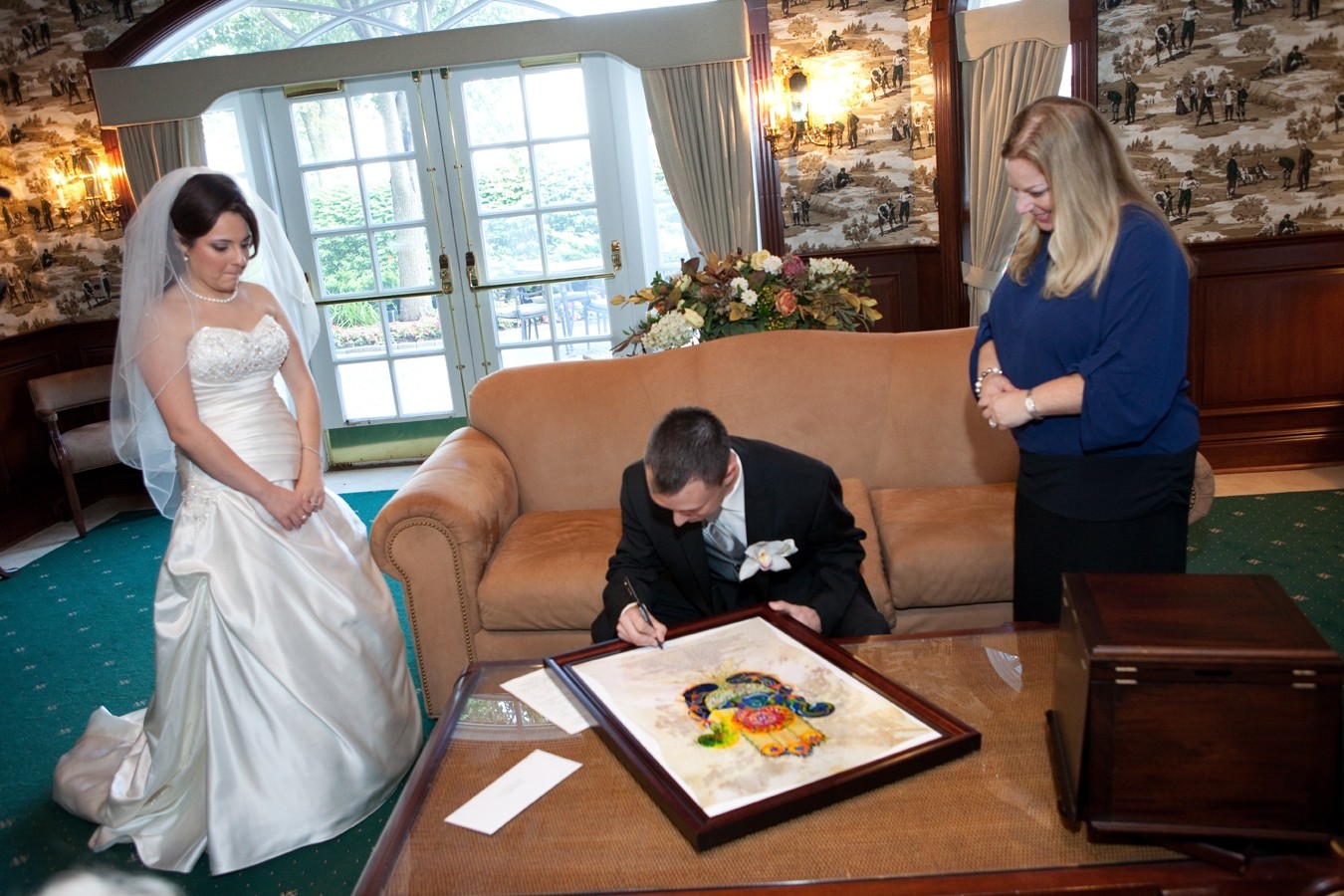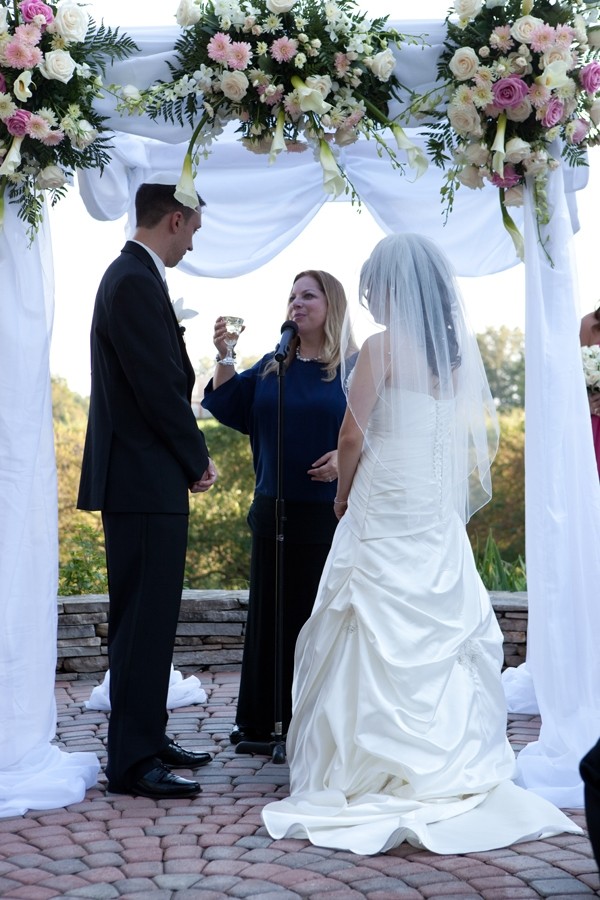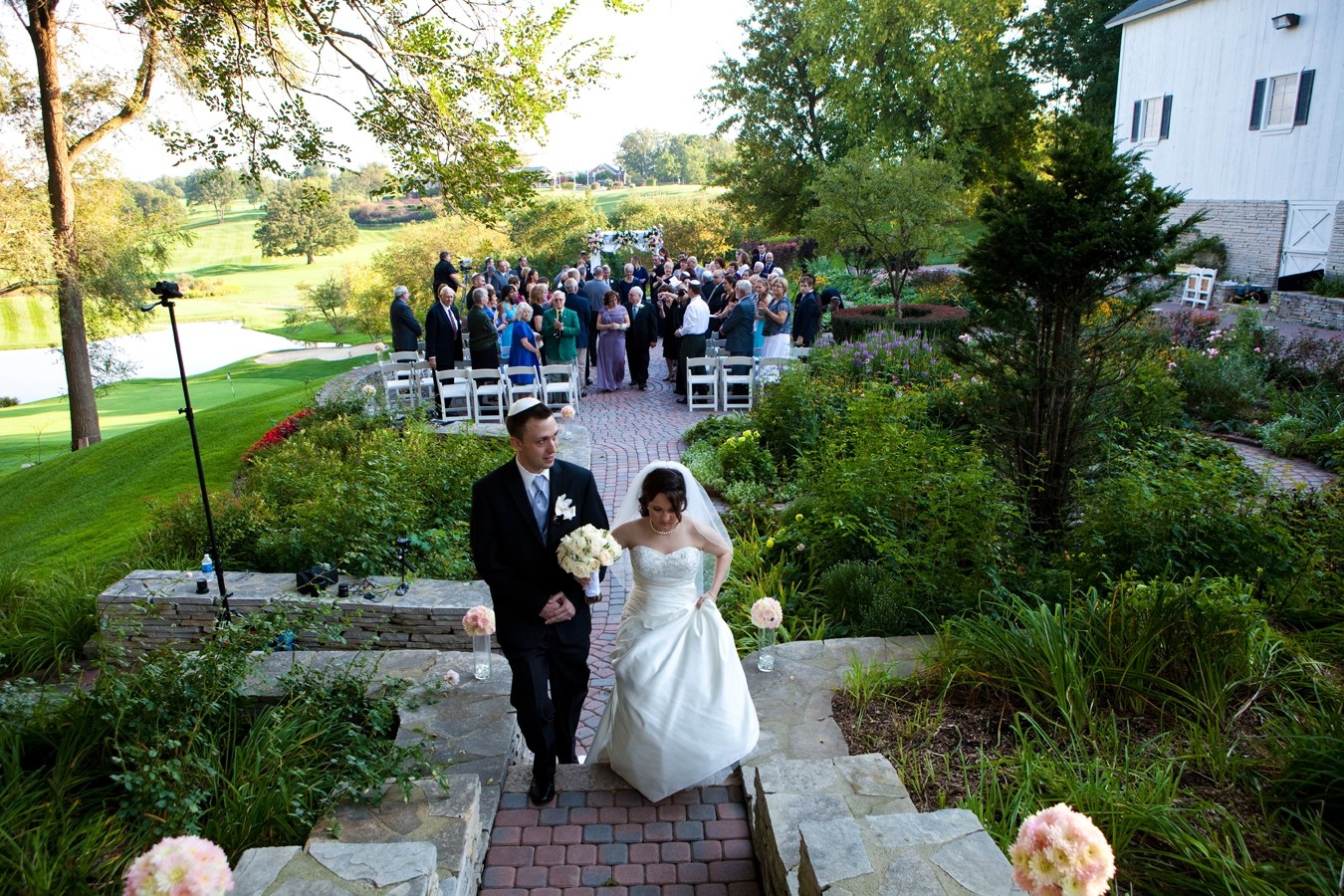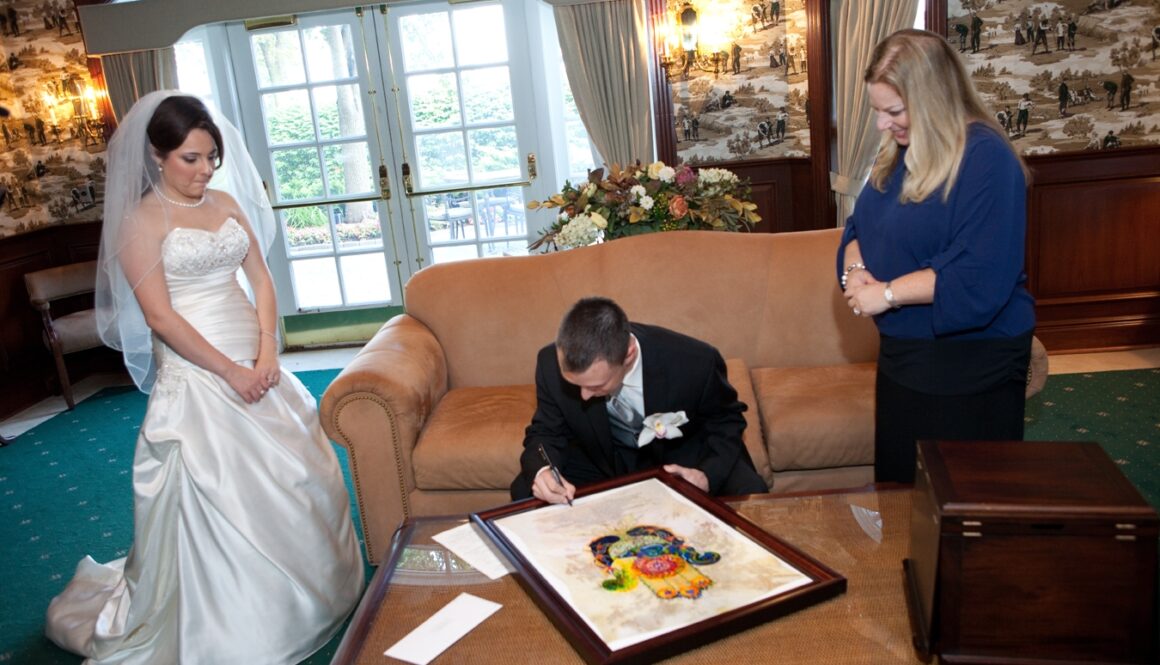Detroit Jewish Weddings

Signing of the marriage contract: Ketubah (marriage contract) is signed before the ceremony in front of two witnesses, the contract states the husband’s obligations to his wife, the document has the standing of a legally binding agreement, it is traditionally read aloud under the chuppa in the original Aramic.
Bridal canopy: aka the Chuppah symbolizes the new home being built by the couple.

Covering of the bride: prior to the ceremony, Ashkenazi Jews have a custom to cover the face of the bride with a veil, a prayer is often said for her.
Unterfirers: in many communities, the groom is led under the chuppah by two faters and the bride by two mothers known as unterfirers.
Encircling the groom: the bride traditionally walks around the groom three or seven times when she arrives at the Chuppah, these numbers are choosen from biblical references.
Presentation of the ring (Betrothal): two blessings are recited before the betrothal; a blessing over wine and the betrothal blessing which is specified in the Talmud, the wine is then tasted by the couple, the groom then gives the bride a ring, traditionally a plain wedding band and recites a declaration, the groom places the ring on the bride’s right index finger, two witnesses must see him place the ring.
Seven blessings: the Sheva Brachot or seven blessings are recited by the hazzan or rabi, or by select guests who are called up individually, being called upon to recite one of the seven blessings is considered an honor, the groom is given the cup of wine to drink from after the seven blessings, the bride also drinks the wine, in some traditions the cup will be held to the lips of the groom by his new father-in-law and to the lips of the bride by her new mother-in-law.
Breaking the glass: after the bride gets the ring or at the end of the ceremony, the groom breaks the glass with his right foot and the guests shout mazel tov (congratulations), light bulbs have been used in more modern wedding because they are easier to break and make a louder popping sound, the origin of his custom is unknown.
Yichud: hebrew for togetherness, refers to the Ashkenazi practice of leaving the bride and groom alone for 10-20 minutes after there ceremony, the couple retreats to a private room, yichud can take place anywere, the reason for it is that according to several authorities standing under the canopy alone does not constitute chuppah and seclusion is necessary to complete the ceremony, Sephardic Jews however do not have this custom.

Special dances: major feature of a jewish wedding, krenzl: when brides mother is crowned with a wreath of flowers as her daughters dance around her, mizinke: a dance for the parents of the bride or groom when there last child is wed, horah: is a middle eastern/israeli dance usually played as a second dance set, gladdening of the bride: guests dance around the bride with silly items like jump ropes made of table napkis, etc., mitzvah tantz: family members and honored rabbis are invited to dance in front of the bride often holding a gartel and then dancing with the groom.
Birkat hamazon and sheva brakhot: after the meal, Birkat Hamazon is recited followed by Sheva brakhot, prayer booklets called benchers may be handed out to guests, after the prayers, the blessing over the wine is recited, with two glasses of wine poured together into a third symbolizing the creation of a new life together.
For help planning your jewish wedding contact tracie@yourethebride.com.
~Tracie
Photo Credits: http://www.studiolartistry.com/
Real Clients: Irina and Tom 9/10/11
The Wyndgate

